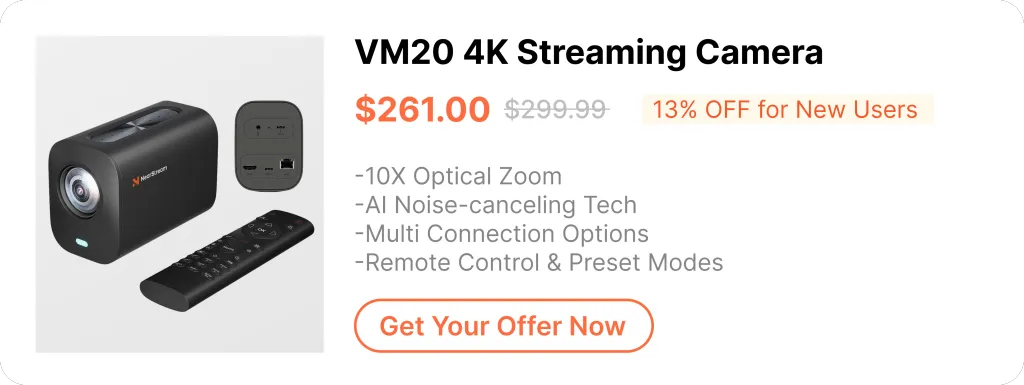Looking for the best video kit for lab simulation and science demonstrations? This guide explores how to build a professional, easy-to-use video recording setup tailored to different teaching scenarios. We’ll also reference a flexible, classroom-ready configuration for inspiration.
Why You Need a Dedicated Video Kit for Lab Simulations
Visual Learning Boosts Educational Outcomes
In science education, complex experiments like chemical reactions or medical simulations are difficult to grasp at once. Recording them allows students to rewatch key steps. According to a 2023 study in Technology, Knowledge and Learning, video-supported instruction significantly improves comprehension and retention, outperforming static images or gamified modules (source).
Hybrid Learning Requires Reliable Video Solutions
With hybrid classrooms becoming the norm, universities increasingly record lab sessions for livestreaming or uploading to platforms. Having an efficient video kit for lab simulation is no longer optional—it’s essential.
Understanding Video Equipment Needs for Teaching Labs
Before building your video equipment for classroom experiments, identify the teaching style you’re supporting:
- Static Demonstrations – e.g., chemical setups, physics apparatus. Prioritize stable footage and fine detail capture.
- Dynamic Procedures – e.g., CPR, mechanical operations. Cameras should offer flexible movement and high frame rate.
- Collaborative Interaction – group sessions require multi-audio and multi-camera configurations.
These distinctions help determine whether you need more lighting, stabilization, or wireless gear.
Choosing the Right Lab Video Recording Kit
Prioritize Video Clarity: Choosing the Right Camera
Blurry video undermines comprehension. For instance, the color change in a titration can be too subtle to detect without sharp resolution. Use cameras with 4K resolution and 20X+ optical zoom. Overhead shots benefit from boom arms or ceiling mounts for optimal angles.
Lighting: A Make-or-Break Element
Lab lighting is often inconsistent or insufficient. Look for kits with softboxes, brightness/color temp control, and green screens. Use the three-point lighting method—key, fill, and backlight—for optimal subject separation, particularly useful in close-up medical or chemical procedures.

Audio Matters: It’s About Clarity, Not Just Volume
Students must clearly hear each instructional step. Suggested tools:
- Wireless Microphones – Ideal for teachers moving around the lab
- Condenser Microphones – Best for narration or fixed-position commentary
Use noise-canceling models to suppress lab equipment hum and prevent echo.
Audio Mixers: The Backbone of Recording Efficiency
Audio mixers allow you to control multiple sources (e.g., instructor mic, student input, ambient sound) via physical dials. Some support Bluetooth for background music or pre-recorded narration—great for asynchronous modules.
Lab Video Solutions by Teaching Scenario
| Teaching Use Case | Suggested Setup |
|---|---|
| Bench-Top Demonstration | Fixed-angle 4K camera + soft LED lights + condenser mic |
| Medical Simulation | Mobile camera + multiple wireless mics + live audio mixer |
| Interactive Group Labs | Multi-camera setup + mixer + multiple mics + switching software (e.g., OBS) |
| Remote & On-Demand Use | High-res single camera + audio mixer + NearSync platform for streaming |
Example All-in-One Kit: Business Duo Kit by NearStream
Once you're familiar with each component, you might appreciate the convenience of a pre-built setup. The Business Duo Kit by NearStream includes:
- VM20 4K Camera – Crisp resolution with 40X zoom
- VK40 Lighting Kit – Studio-quality lighting with remote and green screen
- AWM20T Wireless Mic – Pro-grade, one-click noise canceling, 656ft range
- AM25X Condenser Mic – Clean, quiet vocal capture
- AMIX40U Audio Mixer – 10 channels, Bluetooth audio integration
- ST20 Boom Arm – Flexible camera/mic placement
- Camera Stand & XLR Cables – For rock-solid stability and connectivity
This kit is tailored for instructors who want to start recording immediately without researching individual gear.

People Also Ask (FAQ)
Q1: Can I record and livestream at the same time?
Yes, with the right software (like OBS) and gear that supports simultaneous streaming. Sync your audio/video with NearSync or similar tools.
Q2: What if I’m on a tight budget?
Start with a good camera and a reliable mic. Add lighting and audio control later. Modular gear allows future upgrades.
Q3: How do I make a mobile AV lab kit?
Go wireless. Use lightweight tripods, Bluetooth mics, USB-powered devices, and store it all in a rolling case for classroom hopping.
Final Thoughts: It’s Not About the Gear, It’s About the Fit
Many teachers focus on what to buy. Instead, ask: What do I want students to experience? The best camera setup for simulation training is the one that supports your teaching goals with clarity and ease. With the right video recording equipment, your lab demonstrations won’t just reach more students—they’ll truly connect.



























































